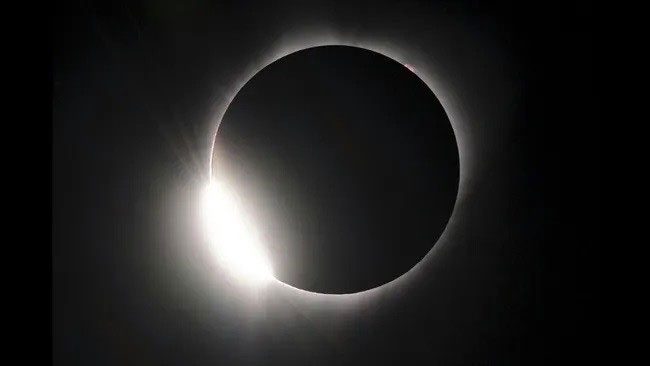Total solar eclipses are so rare that a specific location on Earth can only witness one approximately every 375 years. When a solar eclipse occurs, it is only fully visible to those along a narrow path on the Earth’s surface. The upcoming total solar eclipse on April 8 will offer a new approach to this phenomenon.
Dating the Eclipse
The combination of time and the rare location of a total solar eclipse helps researchers narrow down the exact date when ancient people observed the recorded eclipse. Additional clues such as the time of day (morning, noon, or evening), the time of year (season), or the presence of bright planets can also assist in accurately determining the eclipse.

Photo of the total solar eclipse from 2017, taken at the Oregon State Fairgrounds in Salem, USA. (Photo: Dominic Hart/NASA).
One of the oldest recorded eclipses is on a clay tablet from the city of Ugarit, located in modern-day Syria. The city collapsed shortly after the eclipse, making the tablet one of the last things written by anyone there. The inscription on the tablet reads: “… the new moon at ḫiyaru, the sun sets, its gatekeeper is [Rashap].”
The term ḫiyaru refers to a time of year around February/March, and Rashap may represent a planet. Researchers dated the tablet and the eclipse to March 5, 1222 BCE, over 3,000 years ago, when Mars would have been visible near the eclipsed sun. Thanks to this eclipse, we know that Ugarit fell shortly after March 5, 1222 BCE.
Records like this help researchers establish precise dating in the ancient world.
A Day on Earth is Lengthening by One Second Every 55,000 Years
Accurately predicting future eclipses or tracing the paths of historical eclipses requires knowledge of the positions of the sun, moon, and Earth. Computers can track the motion of each body, but the challenge is that these movements are not fixed. As the moon causes tides in the Earth’s oceans, it also gradually drifts away from Earth, resulting in a lengthening of the day on Earth.
Essentially, the length of a day on Earth is increasing by about 18 microseconds each year, or one second every 55,000 years. Over hundreds or thousands of years, that fraction of a second per day accumulates to several hours.
By determining the timing of eclipses over the past 2,000 years, researchers have mapped out the length of a day on Earth during that same period. The average increase of 18 microseconds per year is just that—an average—though the Earth can sometimes slow down a bit more or a bit less.
Currently, we can measure the changes in the length of a day on Earth with devices, but we would not have been able to record those changes hundreds or thousands of years ago without precise measurements and records of eclipses across millennia and around the world. Total solar eclipses allow us to glimpse into Earth’s history.





















































